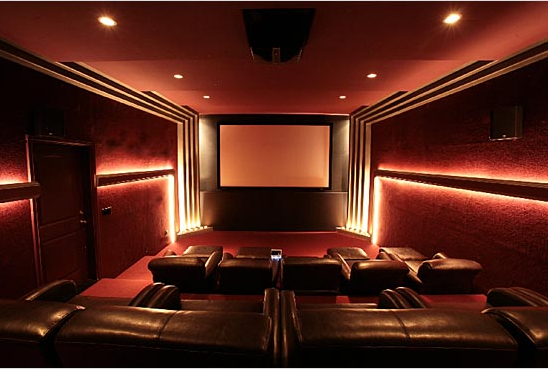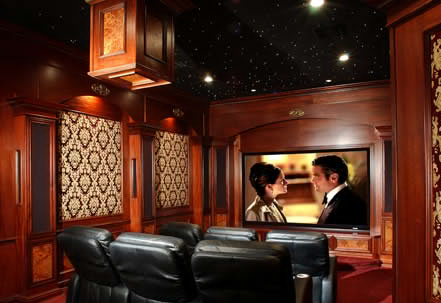You might have spent thousands of dollars on new home theater equipment and components. But no matter how acclaimed (or expensive) the picture and sound features of your home theater are, these will all be for naught if you’re unable to match it with the right home theater lighting.
Of course, you’ll have several options, which we’ll get to in a while. What you do need to remember is that the best home theater lighting is the most ambient: not the brightest, not the most colorful, not the most expensive. Therefore it’s important to make considerations about what kind of home theater equipment you have before deciding on specific lighting scenarios or options.
For example, if you’re using a projector, remember that it will be prone to producing glares from any surrounding light. If you’re using a plasma or flat-screen television, meanwhile, the glare will be distributed more evenly. In any event, home theater lighting is, ideally, darker than lighting in all the other parts of your house, or at least has the ability to be dimmed.
So with that, let’s take a look at some of today’s most popular home theater lighting options:
Sconces: Sconces are light fixtures that are usually attached to a wall, and which are designed to direct the light upwards. Available in various shapes (square, circular, cone, even ceramic sconces) customizations, and themes, and generally installed ¾ of the distance up the wall, sconces make for subdued, non-intrusive lighting, perfect for the home theater experience. Looking to highlight a classic movie poster you’ve just put up on the wall, without ruining the ambience of your home theater? Use home theater sconces to achieve the desired spotlight effect, and evoke a veritable film junkie mood.
Three-way bulbs: As one of the most affordable home theater lighting options, three-way bulbs give you the ability to adjust the levels of light in your home theater. There are two filaments in each of these bulbs, one with a lower wattage than the other, which allow you to choose between three distinct levels of light. Planning on using your normal light fixtures? Just install a dimmer switch. Of course, for energy-saving home theater lighting performance, make the switch from incandescent light bulbs to three-way CFL bulbs.
Capped LED lights: This home theater lighting option delivers truly atmospheric lighting, especially if you use recessed LED lights. Sure, capped lights are typically installed overhead, in between the sound-deadening panels in the ceiling of your home theater, but the light is directed to the side and up and does not reflect on the video screen – making it a non-instrusive, ambient choice for home lighting.
Fiber optic lighting: Fiber optic lights in your home theater keep the space aglow, and can even be decked out in a way that looks like a galaxy of stars, or a pleasant, ambient night sky. The best part? They’re low-wattage, low-amperage, and they never burn out. (You need only to change the bulb every 10,000 hours or so.)
Rope lights: Rope lights are great for stadium-seating home theaters, but that doesn’t mean you just line the ropes out along the rows. Think creatively. Run the rope lighting around the perimeter of your home theater, or use it as a main lighting and install it overhead.
Automated lighting: Whichever home theater lighting option you choose, you might want to consider automating your home theater lighting system and add custom lighting controls. It saves you the inconvenience of having to make manual lighting adjustments – as you put the DVD in, read the synopsis, turn off the subtitles, leave the home theater room to answer a phone call – and it also enhances the value of your home theater. For more tips and information, don’t hesitate to contact the HookedUp Installs team of installation professionals.




In one home, he found that light coming in through a window in the back of the room was hitting the screen at just the right angle that the screen essentially treated it as if the light was coming from the projector, while light from other parts of the room didn’t create a problem.
In one home, he found that light coming in through a window in the back of the room was hitting the screen at just the right angle that the screen essentially treated it as if the light was coming from the projector, while light from other parts of the room didn’t create a problem.
I love how you mentioned every lighting option and its benefits and cons. My husband wants to get a home theater installed this month and needs to make sure that it is done the best way possible. We will keep these tips in mind when consulting a professional about our home theater.
My sister is thinking of renovating her basement as she wants to turn the old storage and exercise room into a luxury theater room that would actually be used! I am so excited for her to get started on this project; however, I want to make sure she has thought through all of the components of the project. I love that you point out that that LED lights can create a great ambient light that doesn’t reflect on the screen. I wonder if she should look at local electricians who could help her figure out these details and get it all installed.